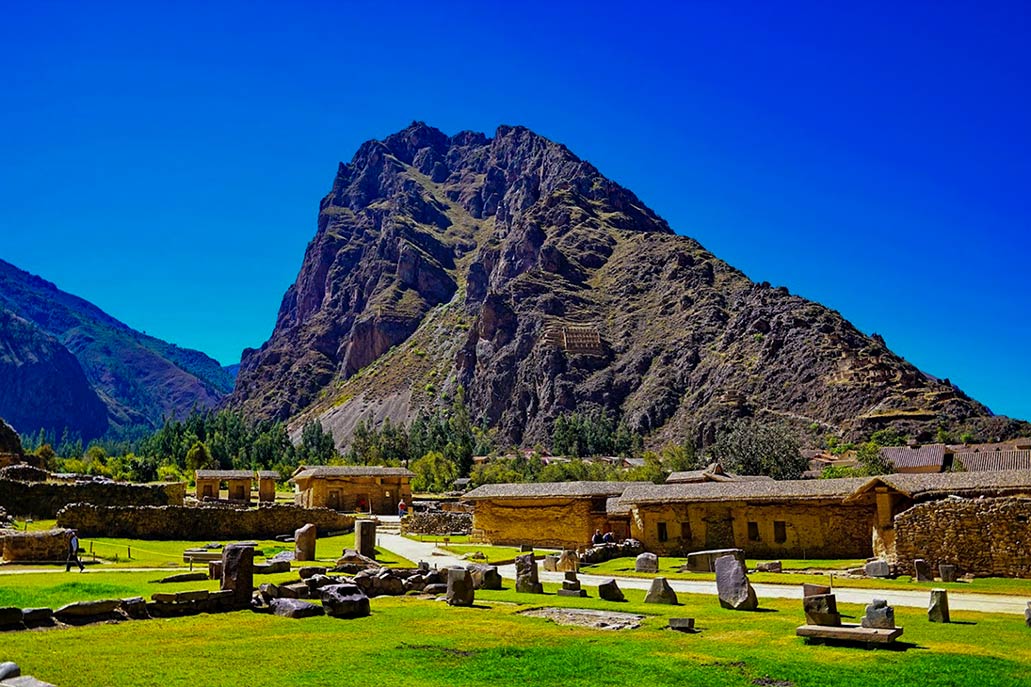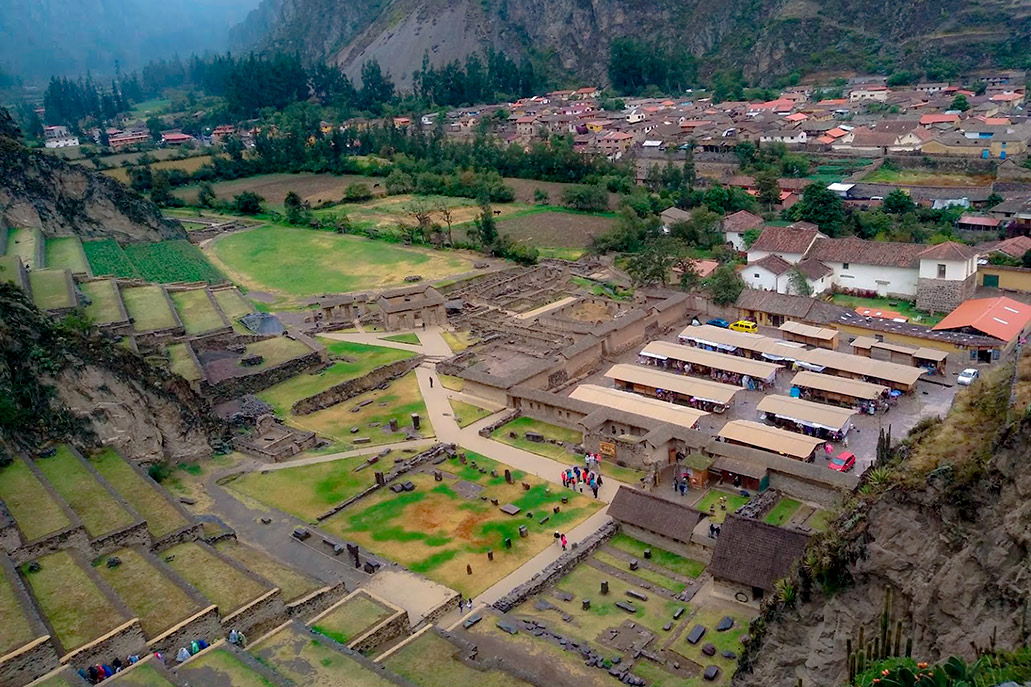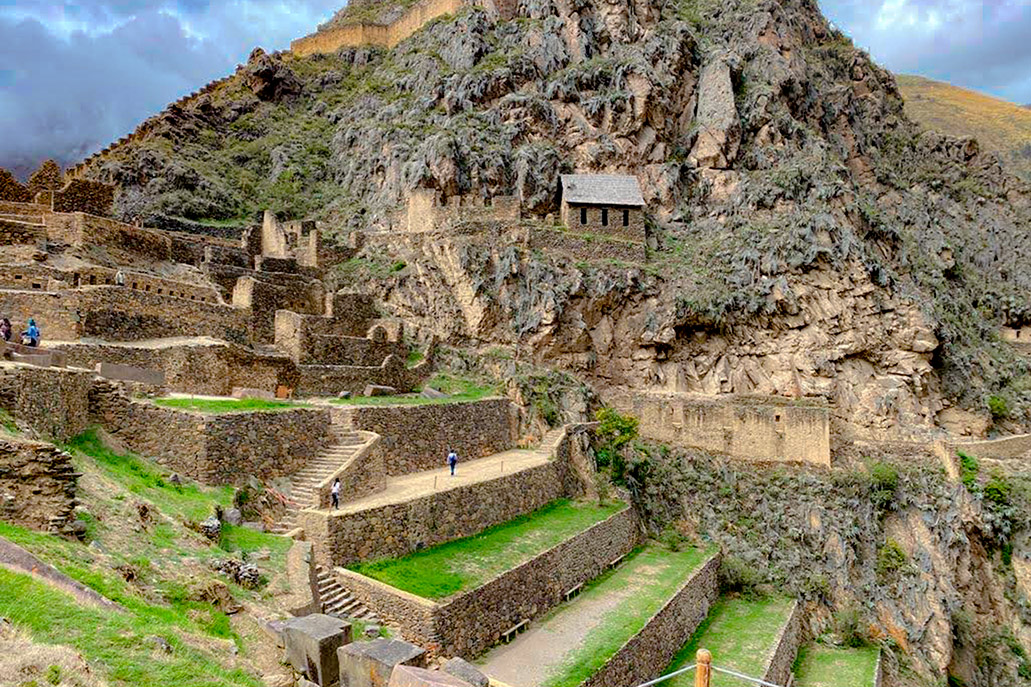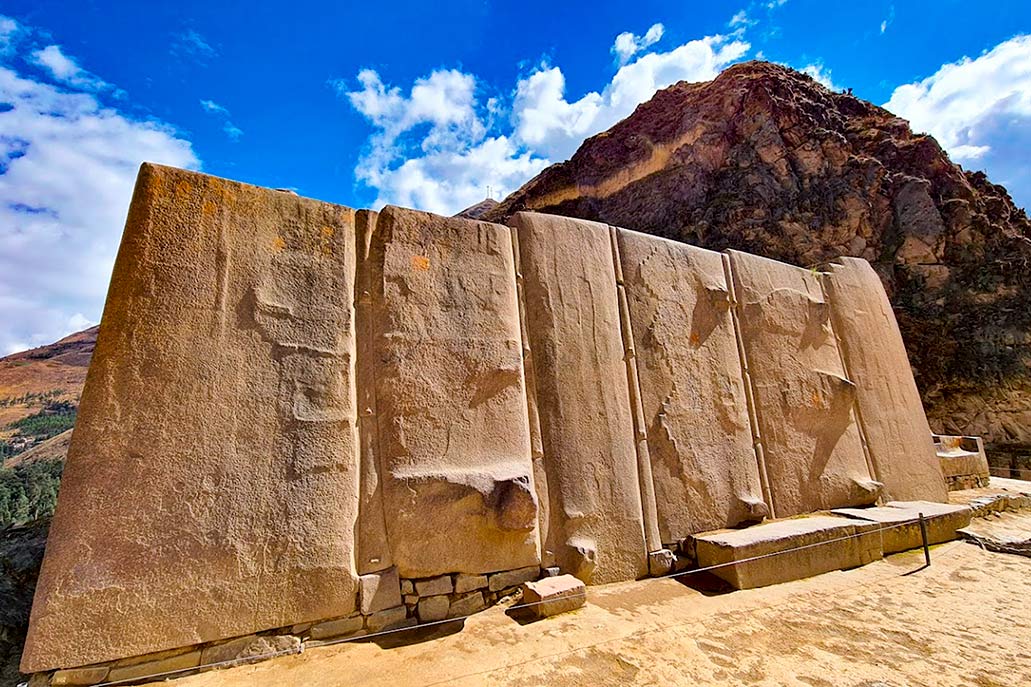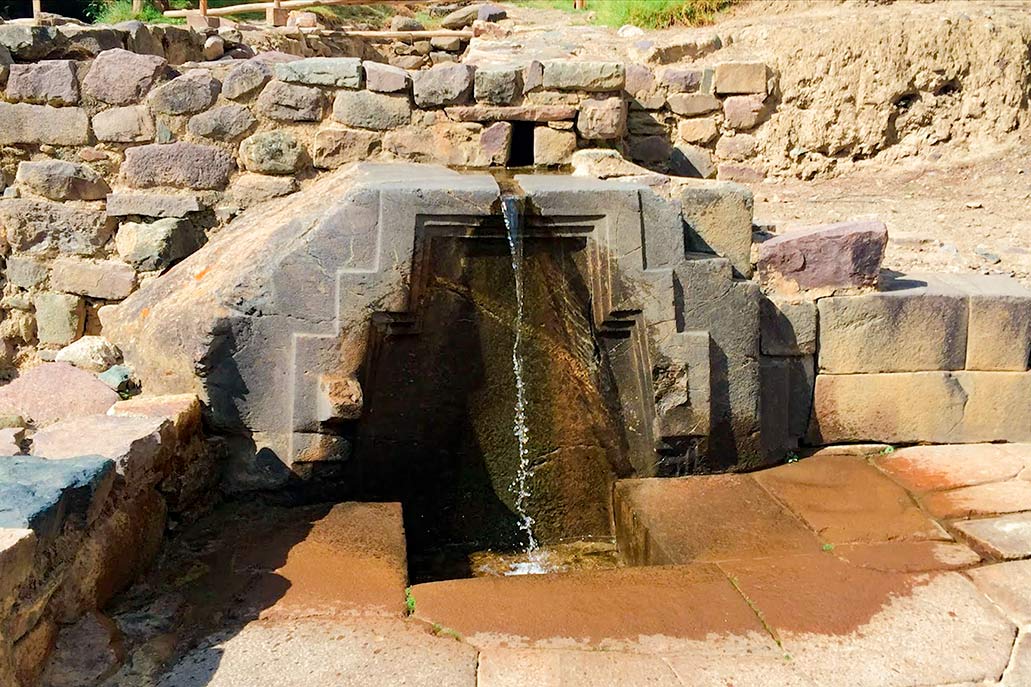Ollantaytambo, discover the Sacred Valley and reach Machu Picchu
Many tourists decide to make the trip to Machu Pichu, having a previous walk through the Sacred Valley of the Incas. In this sense, it is possible to visit the archaeological site of Ollantaytambo. Important Inca site with a lot of history and undeniable archaeological value. Likewise, Ollantaytambo still has a large part of its urban organization as it was designed more than 500 years ago. Furthermore, it not only has these attractions, but it seems that it is still an obligatory step for visitors who want to reach Machu Picchu, as it was in the past. Here, in Ollantaytambo, it is possible to find the train station so you can purchase your ticket or board the train you want to get to Machu Picchu Pueblo.
Content
History of Ollantaytambo
What we currently know as the Sacred Valley of the Incas, in the past also represented an ideal territory for a population to expand freely. Before the Incas came to have control of these regions, it was mentioned that a large part of the sector was occupied by an ethnic group known as the Ayarmacas. They had almost exclusive control of the entire valley. However, after the battle and victory of the Incas over the Chancas, they peacefully submitted to Inca rule.
For this reason, a series of pre-Inca-style constructions and characteristics can currently be found within the archaeological site. However, approximately 80% of all are Inca constructions. They can be distinguished because you can see the characteristic platforms and retaining walls. Likewise, there is a clear dominance of the architectural style of the Incas, in the upper areas where the temples lie. In this sense, it is estimated that Pachacutec was in charge of promoting the beginning of this new dairy farm, although some already attribute this task to his father Wiracocha.
Aymara’s voice “Ullanwtawi” which translated into English could be understood as “seeing down” or “viewpoint”. . Probably alluding to the urban formation that Ollantaytambo presented and presents. Throughout the upper part or above the platforms you can find the main temples. On the other hand, where homes were built today and the population began to expand, a large part of this place obeys the order established by the Incas. That is why you can see some small streets with stone walls.
Shortly after the Spanish dominion of Cusco practically took control of much of Tawantinsuyo. They placed Manco Inca as the regent of the empire. Shortly after, what the local population feared so much began: most of the sacred temples and Manco Inca himself, suffered various abuses and ridicule, especially the women by the Spanish. This led the Manco Inca to rise against Spanish rule, which now had armies of local ethnic groups that were against Atahualpa. Manco Inca’s rebellion caused battles near Lima, in Sacsayhuamán, and Ollantaytambo.
Manco Inca managed to gather a large delegation of approximately 20,000 men and settle in what is now Ollantaytambo. From this place, they began a period of resistance. Unfortunately, after winning the battle in Ollantaytambo, Manco Inca, in his attempt to take Cusco, was met with the response that Diego de Almagro had returned from his expeditions through Chilean lands. In this sense, the Spanish army was reinforced. The victory did not last long and Manco Inca decided to move first to Vitcos, where he was cornered and ended up fleeing to the Vilcabamba Valley, in the Amazon. The place where, together with his children and followers, he managed to establish resistance until the year 1572.
Location of Ollantaytambo
Ollantaytambo is located almost at the end of the extensive Sacred Valley of the Incas. Likewise, it is considered a main destination for Cápac Ñam because from this point the connections of the routes to the unpredictable and dangerous Amazon would be made. This is the step to reach the Cusco jungle. Currently, it is also considered one of the main destinations to reach Machu Picchu, since the train station is located there. In addition, it is important to note that the world’s wonder is located in the high jungle of Cusco, and whether you decide to do the route by train or walking you will always have to get to Ollantaytambo.
Currently, Ollantaytambo belongs to the province of Urubamba. Geographically it is located near two rivers, which are the Urubamba or Vilcanota River and the one named Patakancha. Regarding its altitude, it is 2792 meters above sea level. It is distanced from Cusco by a 60-kilometer paved road. Travel time by bus, minivan, and car is almost always around 2 hours. Being located in the Sacred Valley, it has a temperate-cold climate throughout the year. The average temperature per year is 14.4°C.
Ollantaytambo is the perfect step to reach Machu Picchu
As we mentioned above, Ollantaytambo is the perfect step to reach Machu Picchu. Not only because it is a mandatory route, but also because it is a place where you can discover many mysteries spread by the ancient settlers of this territory. To start, you can plan to take a previous route through the entire Sacred Valley of the Incas. In this sense, you could visit not only Ollantaytambo but Pisac, Maras, Moray, Chinchero, and even Urubamba where you can find restaurants with exquisite dishes or stews.
Visiting all these places can take you two days, but if you plan the trip well or have private transportation, you will probably do it without any problem. You will only have to pay the entry fee for the Cusco Tourist Ticket. You can purchase this ticket at any of the archaeological sites. Once you have completed the tour of all these places that have particular attractions, you can take the train trip to Machu Picchu Pueblo at night and visit the wonder of the world the next day. Most hotels offer breakfast so you won’t have to worry.
A comfortable way to visit Machu Picchu is to tour Pisac and Ollantaytambo. This tour is quite popular with travel agencies, therefore, you can purchase the entire tourist package and not worry about anything, just enjoy your trip to Machu Picchu. By visiting only these two places, you can discover part of the Inca architecture, the details they used to plan their citadels. Both Inca sites are the perfect appetizer so that, when you arrive at Machu Picchu, you better understand and understand the entire urban and religious process of the Incas. For example, in Ollantaytambo, we will find platforms that serve as support or elevation for the temples. It is also possible to find other constructions that we will see below.
The Ollantaytambo Archaeological Park
Ollantaytambo was destroyed after Manco Inca decided to retreat towards Vilcabamba. Most of the enclosures were destroyed, especially the details such as stone carvings, and ceremonial centers, and the temples were completely looted. Likewise, the large stones surely received considerable damage during the attempt to destroy them. Currently, we can find the platforms and parts of the buildings. Especially the temples that had a different construction technique managed to resist to this day. Let’s learn more about the places that make up Ollantaytambo.
Platforms and terraces
- Once we arrive at the archaeological site and validate our entry. Even from the moment, we approach the central area. It will now be possible to appreciate the 17 platforms that are erected between the mountains. These platforms were used to grow, probably medicinal plants considered sacred. These platforms or terraces are connected by stairs that lead to the main temples. Likewise, they serve as the main separation between the temples and the rest of the buildings.
Wall of 6 monoliths
- It is also known as the Temple of the Sun. This construction is located in the highest area of Ollantaytambo. It is exactly located on a pyramidal base made up of platforms. There 6 large stone monoliths are erected, one of them can weigh 60 tons. The stone for this set of stones was pink granite. The quarry of these stones is located 4 kilometers from the place.
- These walls are part of what is known as the Temple of the Sun. Unfortunately, the construction has some damage and at the same time, it seems that it is unfinished. Therefore, it is also mentioned that the temple was destroyed in an attempt to subject the indigenous population to Christianity. These 6 monoliths had decorations, of the chacana and probably of some other deity. Likewise, since it was the Temple of the Sun, it surely had gold decorations.
Main shrine
- Also known as Petitions Square. It is a place of open countryside where visitors or those who came to Ollantaytambo could request favors from the gods. It is located very close to the Patakancha River. The main characteristic of this place is that it has several entrances or doors.
Sector of ten niches
- This is a construction that is located just at the end of the platforms through which you reach the upper area. It also adjoins important buildings, which is why this entire place is also known as the Royal House of the Sun, due to the presence of several sacred niches. The enclosure of the 10 niches also has demolished walls. It probably served as an important shrine, since it connected directly with the platforms and agriculture.
Pre-Inca sector
- The Preinca sector is a sector of Ollantaytambo that has a different style of construction. Few enclosures have survived to the present day, but they do allow comparisons to be made. This sector is located near the entrance area, that is, before reaching the rise of the platforms.
Las colcas
- Next to the archaeological park of Ollantaytambo, you can find some colcas or warehouses. Built from stone and mortar. So far you can see the construction details that allowed both the sun and the wind to enter fluidly so that the food can stay fresh. Likewise, in front of the entire archaeological park, you can see similar constructions.Once upon entering these buildings, you can feel the freshness that even now they continue to create through the shape of their windows and high walls.
The walls
- Ollantaytambo appears to be surrounded by stone walls. At the same time, these walls are retaining walls, very similar to the platforms. However, others effectively fulfill the function of a wall. This was probably because Manco Inca decided to form his army and take Ollantaytambo to confront the Spanish forces, reinforcing their access.
Military zone
- It is a sector built in a normal way. It has several spaces where the army or infantry probably rested, they had spaces for feeding and similar activities. This entire sector may have been damaged and destroyed, as it is a military space, where weapons and so on could be found.
Shrine or water fountains
- Almost at the end of the tour of Ollantaytambo, you can find a series of buildings that are related to the worship and contemplation of water. The buildings that make up this place are a temple, water channels, and even fountains. It has a vast expansion, water channels can also be found near the platforms and in much of the entire Ollantaytambo archaeological park.
Ñusta Baths
- One of the main sources dedicated to water is what is known as Baños de la Ñusta. This fountain has a carving that highlights its importance according to Andean mythology. It has decorations in the shape of a chacana. The chacana was an important symbol, which served to express the importance of a place over the rest. The wonderful thing about this fountain is that it still works and the flow of water that passes through this water channel can be adjusted.
Scheduleand details for entry
Ollantaytambo is constantly visited by travelers who want to know Machu Picchu. Many of them visit when they return or go to Machu Picchu. As we already mentioned, in Ollantaytambo we can find the train station, in addition, we can find hotels, restaurants, and different transportation to return to Cusco.
The entrance time to the Ollantaytambo Archaeological Park is from 7:00 a.m. to 6:00 p.m. The travel time can extend up to 3 hours. In this sense, if you want to enter in the afternoon you must enter before 4:00 p.m. Likewise, carefully review the options you will have to travel to Machu Picchu Pueblo, according to your entry ticket to Machu Picchu, so that you do not have any inconvenience. However, you can also visit Ollantaytambo when you return. Remember that entry is made with the Cusco Tourist Ticket.
